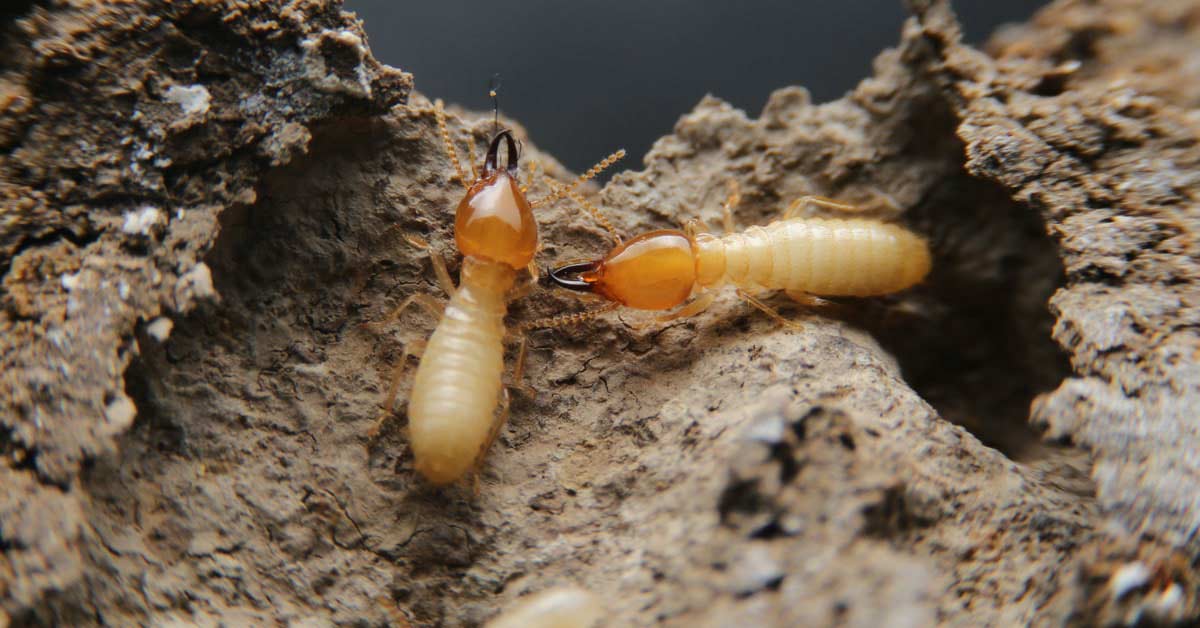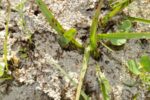
Drywood vs Subterranean Termites
Here at Hulett Environmental Services, we receive many questions regarding the different species of termites and questions about the various effective treatment methods for eradicating infestations, including “Do you tent for subterranean termites?”, along with “Does tenting kill subterranean termites?” and lastly “What is the difference between drywood vs subterranean termites?” Having termites make their colony inside your walls is a frightening experience for any homeowner, as the pesky creatures cause billions of dollars in damage in America each year. What’s even worse is that many homeowner’s insurance policies do not cover the costs associated with repairing termite damage, leaving countless individuals on their own when it comes to fighting infestations and ensuring their dwellings remain structurally sound.
At Hulett Environmental Services, we are here to provide home and business owners with premier termite treatment and prevention in South Florida. We’ve been operating exclusively in the region for over fifty years and are true experts when it comes to termite eradication. No matter what species of termite makes their way inside your home, we will administer an aggressive and effective treatment so that you can reclaim your home. What’s more is that all of our termite treatments are centered on convenience for your family, with the goal of disrupting your daily schedule as little as possible throughout the treatment process. Additionally, we offer the use of family-friendly, pet-friendly, and environmentally-friendly treatment techniques for the best possible experience.
Another thing that we pride ourselves on here at Hulett Environmental Services is providing top tier pest education to the South Florida community, which is something you will be hard-pressed to find at other pest control companies in South Florida. Unfortunately, the sub-tropical climate in the region makes for an ideal home for many pests and insects, so staying well-informed is essential to protecting your home. That’s why we’re providing an overview of drywood vs subterranean termites and answering questions such as “do you tent for subterranean termites?”, “does tenting kill subterranean termites?”, “when should you tent fumigate for termites?” and more.
What Are Drywood Termites?
Drywood termites are a type of termite that typically invades and infests homes through reproductive flights. During swarm season, king and queen termite swarmers fly from nearby infested structures and look for a mate and a new place to invade and infest. Most of the swarmers die from predators like lizards, or by natural causes like dehydration before they are able to find a mate and a new home. However, few will be successful in colonizing, and unfortunately, they can colonize within your home. Termite swarmers are attracted to lights. So swarmers will often fly towards the exterior lighting of your home, land on your exterior walls, and find a mate. Then, the termites will actually shed their wings so they can crawl into the tiniest cracks and crevices, and a king and queen will start a new colony in a doorframe, window frame, facia, soffit, or inside an attic. Once infesting a piece of wood, drywood termites will eat the interior of the wood, lay eggs, and excavate the interior to make room for their growing colony. They will expel their fecal pellets out of their galleries and onto the floor through tiny kickout holes. They do not require soil or moisture to survive and they may burrow into the siding of your home, walls, wooden beams, cabinetry, and more. For this reason, their damage, although it can be severe, is often dry and clean as compared to the damage caused by subterranean termites. Drywood termites weaken the structural integrity of your dwelling from the inside out.
Drywood termites are particularly concerning to homeowners because they are cryptic, meaning that they are often concealed and in hard to reach places. Because of this, sometimes homes are infested by drywood termites for years before the homeowner sees the signs or damage of drywood termites. This is why frequent termite inspection in South Florida is so important, because the damage can accumulate.
There are two effective ways to eradicate drywood termite infestations, and which method is most appropriate for your home will depend on several factors. First, drywood termite infestations can be either small and localized to one specific area of the house, or they can be large and widespread and be present throughout the entire structure. Other factors that impact the type of treatment that we will recommend is the extent of the termite damage and how long the infestation has likely been present. These two treatments for drywood termites are either the “no-tent” termite treatment, or tent-fumigation. Many homeowners prefer the “no tent” termite treatment whenever possible, as it does not require vacating the home, disposing or removing food or medication, or exterior preparation. However, wider spread infestations may require tented fumigation.
Signs of Drywood Termites
Often, drywood termites may hide deep inside the walls of your home or in the far corner of attics, and you may not notice any damage until it is too late. That’s why we recommend routine pest and termite inspection and preventative treatments so that our experts can examine your home for signs of damage and help stop the pests from ever making their colonies inside.
Signs of drywood termites include wood that sounds hollow when you knock on it, flying termites or termite wings that look similar to flying ants, and more. You may see a large number of adult termites, called swarmers, gathering on the outside of your home or around wooden window sills. You may also notice that wooden structures in and around your home begin to have many small holes, and fecal pellets, called frass, can by piled underneath these kickout holes. The frass is small, hard, six-sided pellets that can look like coffee grinds, although they can be tan, brown, or reddish in color, too.
What Are Subterranean Termites?
Subterranean termites are another prevalent type of troublesome termite pest that can make their home inside South Florida dwellings. This type of termite prefers warm, damp environments which make the region particularly inviting, much to homeowners’ dismay. These insects are called subterranean termites because they live comfortably below ground, and can invade your home from the soil to nest in your home and feast on wood.
We often hear questions about these specific species of termites including “do you tent for subterranean termites?” and “does tenting kill subterranean termites?”. Tent fumigation is the most effective whole structure treatment method for drywood termite control in a single treatment. The reason why fumigation is so effective for drywood termites, is that all of the drywood termites are contained within the structure. However, this is not true about subterranean termites. With subterranean termites, the majority of the colony can live underground, with only a fraction of the colony invading your home to feed. For this reason, the treatment needs to focus on the soil, the source of the invasion. And even though your home might only be invaded by a portion of a colony, with colonies with millions of individual termites, subterranean termites can still do an extensive amount of damage. For subterranean termites, the most effective treatments include a liquid termite defense treatment into the soil to protect your home from invasion, or a termite baiting system that can control the entire colony. Controlling the entire colony is crucial, especially when dealing with invasive subterranean termites, a subset of subterranean termites that have particularly large and destructive colonies.
Signs of Subterranean Termites
Because subterranean termites come from the ground, they are often associated in areas around the home that are prone to moisture, like kitchens, baths, utilities, or other sorts of plumbing penetrations. This type of termite, unlike drywood termites, require a moisture source. Subterranean termites can use the moisture from the soil to invade your home, or use moisture they are able to find in your home from a water leak. Either way, while these termites feed on the interior of wood, they can keep the moist climate they require by coating the interior of the wood with termite mud. This termite mud is a combination of soil, fecal material, saliva, chewed up wood, etc. Subterranean termites will travel within these mud tunnels or mud tubes to invade and travel throughout your home, feeding on wood along the way and leaving behind their system of mud tubes.
Unique signs of subterranean termites include finding mud tunnels, tubes, or burrows that appear to be leading into your home. Additionally, you may notice shed termite wings, paint or wallpaper that appears to be bubbling or peeling with no other explanation, dark areas or blisters in wood flooring, signs of moisture, and more. In severe subterranean termite infestations, you may even hear the termites feeding and moving within the wood by hearing clicking noises coming from inside the walls.
The trouble with subterranean termites is that they can have massive colony sizes that can cause extensive damage to the integral structure of your home. Sometimes this damage can occur out of sight, within a wall, but not leave any signs apparent to the naked eye. This is why hiring a professional pest control service like Hulett Environmental Services is essential.
How Pest Control Specialists Can Help
It is essential that you properly identify drywood termites vs subterranean termites if they are infesting your home and business, as the two types of termites require different treatment methods to eradicate them effectively. Many people ask us “do you tent for subterranean termites?” and “does tenting kill subterranean termites?” and many are happy to learn that structural fumigation is often not the most effective treatment method for subterranean termites. Instead, the installation of specialized termite bait or soil treatment is often the best treatment for total colony elimination. However, only a trained pest control and termite control specialist can make that determination.
Schedule Your Free Inspection
Hulett Environmental Services is proud to offer home and business owners free inspections in South Florida. If you believe you may be battling an infestation or want to begin preventative maintenance, call Hulett today. We will arrive promptly and provide you with a comprehensive evaluation, properly identify drywood termites vs subterranean termites, and comprise a unique treatment plan to meet the needs of your home, family or business.
Termites love South Florida. Don’t let them invade your home or business. Just call Hulett.



